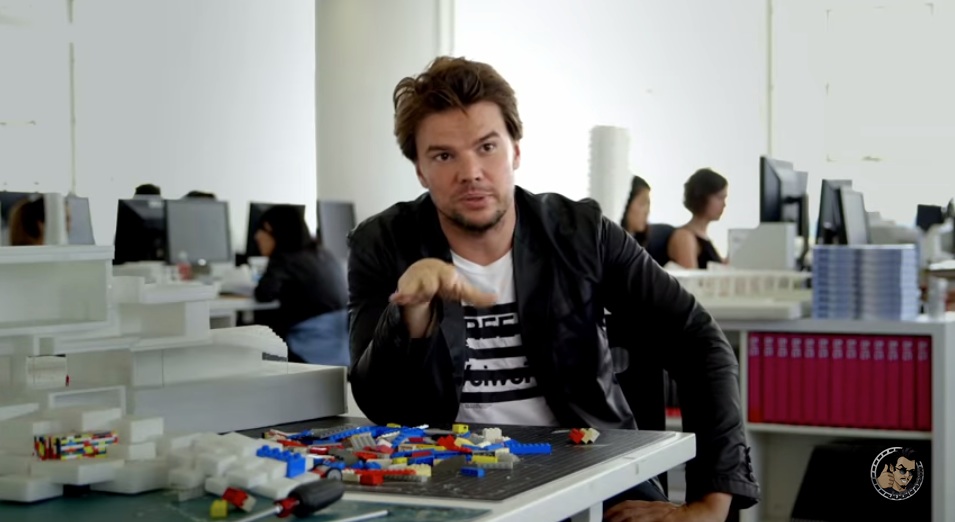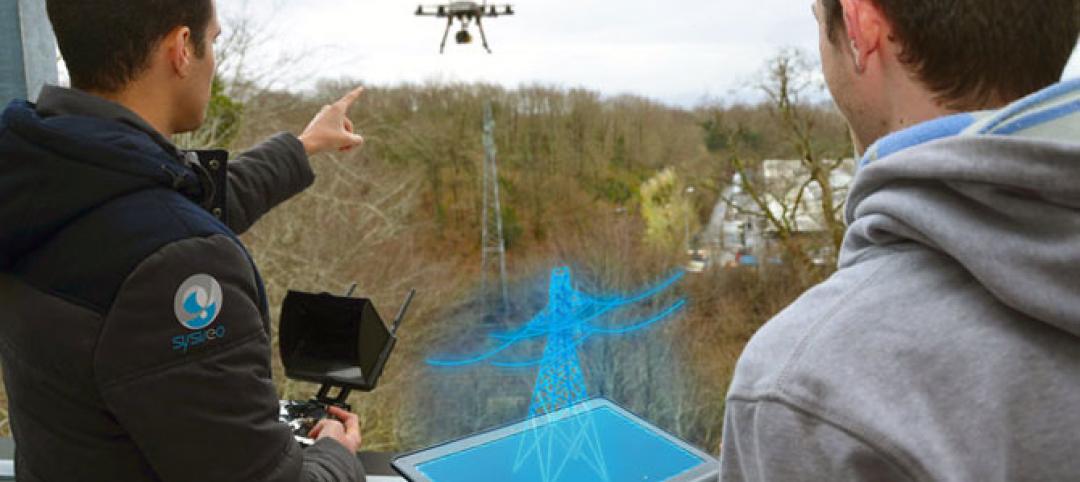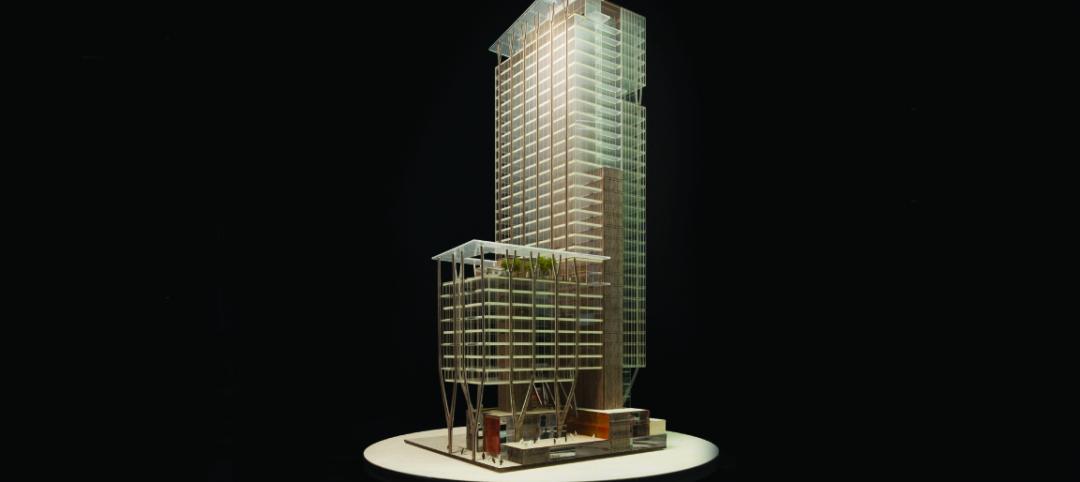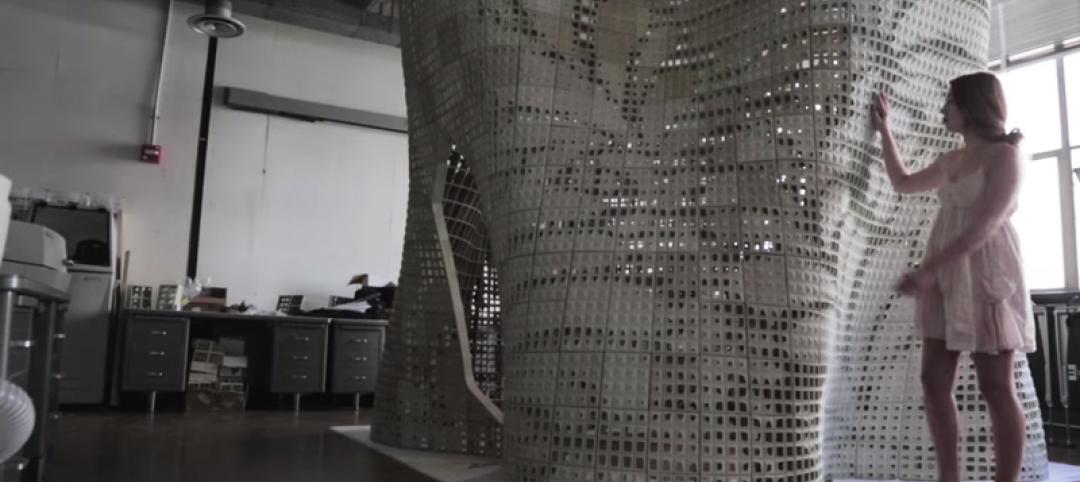Over a five-day period last month, as part of the Milan Expo 2015 in Italy, a slim tower made from more than 500,000 Lego bricks rose to 35 meters (114.8 feet), setting a new Guinness World Record as the tallest structure built with those familiar acrylic bricks.
Denmark-based Lego Group donated 7 Euros (US$7.752) for every centimeter of the tower to Urban Oasis, an urban protection and development project connected with the World Wildlife Fund.
That tower offered one more example of the role that Legos have played in the worlds of construction and creativity since the company’s founding in 1932. Last month, Lego Group, the company that makes the toy bricks, established its Lego Sustainable Materials Centre, and announced that it would invest 1 billion Danish Krone (US$148 million) for research, development, and implementation of sustainable raw materials to make Lego bricks and packaging.
In the documentary, Bjarke Ingels—whose eponymous firm is based in Copenhagen, Denmark—notes that, because of its harsh climate and high labor wages, much of what gets built in that country must be prefabricated to shorten the construction time.
The company has also teamed with Warner Bros., Interactive Entertainment, and TT Games to release an interactive video game that allows players to use Lego building sets digitally to build and create “wherever their skills and imagination roam,” says its press release.
“Our goal is to inspire and develop the builders of tomorrow,” said Lego Group’s owner Kjeld Kristiansen. “We believe that our main contribution to this is through the creative play experiences we provide to children.”
On July 31, a documentary film called "A Lego Brickumentary" will be released in the United States. Its narrator, the actor Jason Bateman, says it’s a story “about a simple toy and how its unique properties ushered in a new era of creativity for a whole generation.”
Along with a host of inventors and toy aficionados, the film interviews such Lego lovers as Facebook’s cofounder Mark Zuckerberg and Houston Rockets’ center Dwight Howard. Also featured prominently is starchitect Bjarke Ingels, who recounts how he won one of his first commissions by designing a model using Legos.
In the documentary, Ingels—whose eponymous firm is based in Copenhagen, Denmark—notes that, because of its harsh climate and high labor wages, much of what gets built in that country must be prefabricated to shorten the construction time. “In a manner of speaking, Denmark has become a country entirely built out of Legos,” he says in a clip of the film that Wired magazine posted on its site.
The Lego Group chose Ingels’ firm to design its Lego House, a 12,000-sm (129,167-sf), 23-meter-tall educational center in Billund, Denmark, whose purpose, in Kristiansen’s words, is “give us the opportunity to show how children learn through Lego play, and at the same time we can tell the Lego history in an involving way which reflects our values. Lego House is scheduled to open next year, but in the interim Lego Group will send a 1:100 scale model to six different fan events around the world. The model—built from 18,000 Lego bricks, of course—was seen by about 20,000 people who recently attended the largest Lego fan exhibition in Switzerland.
Related Stories
BIM and Information Technology | Apr 29, 2015
Self-piloting drone maps out construction sites in Pennsylvania
The system comes with a real-time portal for immediate access to collected data.
BIM and Information Technology | Apr 27, 2015
The construction industry isn't rushing to hop onto the cloud: study
A new poll finds that nearly half of companies aren't planning to shift to cloud-based software to collaborate any time soon.
BIM and Information Technology | Apr 21, 2015
Software tools shouldn't dictate the AEC process
With over 200 solutions on the market, construction software is one of the most complex and fragmented markets, writes Gensler's Mark Thole.
BIM and Information Technology | Apr 9, 2015
A carboard box by Google can bring virtual reality to architecture
The global search engine giant has launched a new product, Google Cardboard, that easily allows users to experience virtual reality.
BIM and Information Technology | Apr 9, 2015
How one team solved a tricky daylighting problem with BIM/VDC tools, iterative design
SRG Partnership's Scott Mooney describes how Grasshopper, Diva, Rhino, and 3D printing were utilized to optimize a daylighting scheme at Oregon State University's new academic building.
BIM and Information Technology | Apr 3, 2015
French startup develops drone camera that overlays video with 3D images
The new drones can capture video and overlay the shot results with 3D images and augmented reality remotely.
BIM and Information Technology | Mar 23, 2015
Drones for AEC: How every stage of a building project can benefit from drone technology
From photo-mapping to aerial progress videos, SRG Partnership's Dmitriy Molla studies real-world applications for unmanned aerial vehicles.
BIM and Information Technology | Mar 23, 2015
Skanska hosts three-week 'hackathon' to find architect for Seattle tower development
Searching for a nimble, collaborative design firm for its 2&U tower project in Seattle, the construction giant ditches the traditional RFQ/RFP process for a hackathon-inspired competition.
BIM and Information Technology | Mar 16, 2015
Berkeley researchers develop 3D-printable concrete powder
The technique allows teams to create more complex and precisely finished structures, with reduced weight and waste.
High-rise Construction | Mar 16, 2015
NBBJ creates 'shadowless' skyscraper concept for proposed UK development
A team of architects from the London branch of NBBJ used computer algorithms to generate a dual-tower design that maximizes sunlight reflections to eliminate the buildings' shadows.

















